Our writers honor the man responsible for some of the genre’s most emotionally affecting and visually stunning films of modern times, Guillermo del Toro.
Born on this day, October 9, 1964, Guillermo del Toro is a Mexican director, screenwriter, and producer known for imbuing horror and fantasy films with emotional and thematic complexity. His passion for film and horror developed as a small child, and he is now widely regarded as one of the most influential and visionary filmmakers and storytellers in modern cinema. He’s a man of monsters, with a deep love for darkness and a heart that beats for all that is often seen as “other” — the grotesque, the broken, the misunderstood. However, it’s not the horror but rather the humanity of his films that truly elevates them in a way so few films can come close to, delivering the kind of movie magic only del Toro can create.
In honor of his birthday, our team celebrates the contributions of this remarkable creator — from his awe-inspiring feature films, to his important work in television, fiction, and even video gaming. We pay tribute to a man who has helped redefine the genre by loving, celebrating, and empathizing with the misunderstood monster.
Guillermo del Toro may be a master of horror, but he also champions the power of love to conquer fear… which just makes us love him that much more.
…
1. CRONOS (1993)
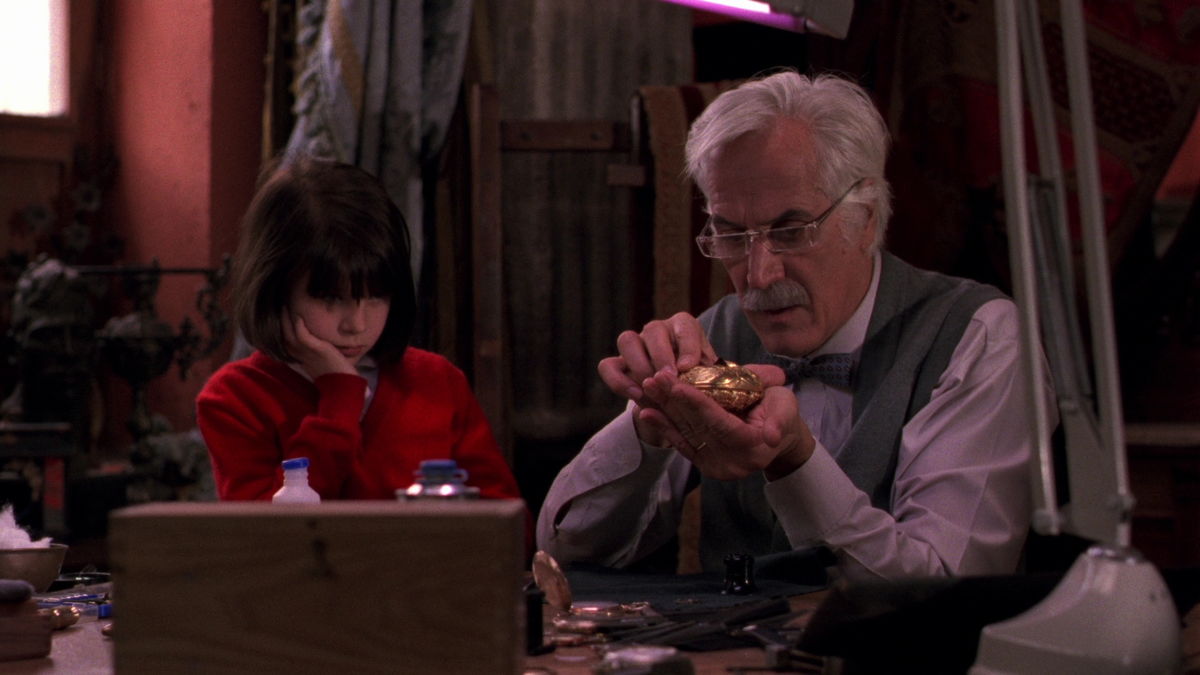
Recommended by The Angry Princess (Stephanie Malone, Editor-in-Chief)
Cronos is a 1993 independent horror film written and directed by a then 29-year-old, first time Mexican filmmaker named Guillermo del Toro. It’s a stylish and sophisticated spin on the age-old vampire tale, an ode to classic horror infused with tremendous heart and intoxicating Latin magic realism.
In a striking prologue, a 16th century alchemist crafts a beautiful but grotesque device, resembling a scarab beetle, that violently injects the owner with a substance that grants immortality. However, like all gifts too good to be true, this one comes with a hefty price: bloodlust. Fast forward 400 years, and the Cronos Device, which has been hidden inside a statue, is inadvertently purchased by an antiques dealer named Jesus Gris (Federico Luppi). When he discovers the golden bug and starts tinkering with it, the living vampiric insect nested inside starts feeding off its new host. Soon, Jesus discovers he is healthier, more energetic, and younger looking than ever.
Meanwhile, a dying millionaire (Claudio Brook) obtains the journal of the ancient Spanish alchemist and learns of the Cronos Device. He demands his brutish nephew Angel (the great Ron Perlman, in the first of many future collaborations with del Toro) track down and obtain the device for him. Perlman is as wonderfully funny and charming as he is sinister, and it’s clear why del Toro fell in love with the versatile actor.
After a terrifying encounter with Angel turns deadly, Jesus returns from the grave looking much worse for the wear. But though he’s now a rather gruesome undead vampire, his granddaughter Aurora (Tamara Shanath) still adores him.
In fact, the enduring bond between the young girl and the immortal old man is at the heart of this tender, heartbreaking tale.
Atmospheric and haunting, this half-horror, half historical fable served as a promising debut for the young auteur — heralding the brilliance just ahead on the horizon and introducing the world to an incomparable visual storyteller.
Cronos won the grand prize in the Critics’ Week at the 1993 Cannes Film Festival, and nine Mexican Academy Awards, including best picture and director. While he may not have yet had the resources to fully realize his extraordinary vision, Cronos is a mini masterpiece that demands to be seen.
2. THE DEVIL’S BACKBONE (2001)
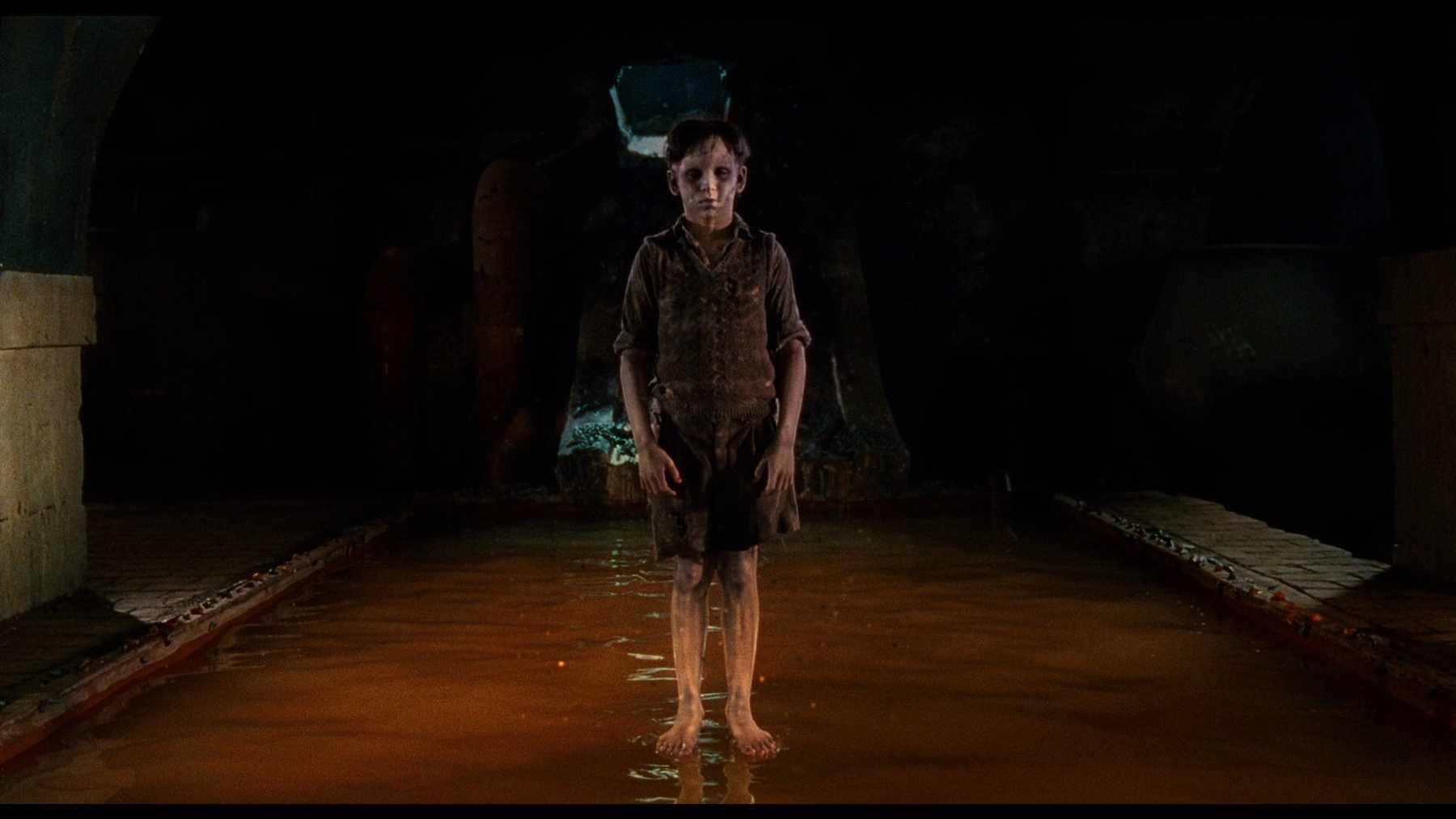
Recommended by Michael Benevidez
Guillermo Del Toro’s Devil’s Backbone is often praised and well regarded, but it somehow gets left out far too often from discussions about the long list of Del Toro’s impressive cinematic achievements. Whether it’s because it’s a Spanish language film, or because it got lost in the shadow of its twin sister, Pan’s Labyrinth — often regarded by Del Toro as being the feminine sibling to Devil’s Backbone — is up for debate.
What isn’t up for debate is how extraordinary this film is. With the frustrations of Mimic behind him, Del Toro successfully set out to make a movie that would become a blueprint for his future films.
Devil’s Backbone is very much a labor of love, and it shows.
A Gothic tale set in an orphanage deep in a desert, while a war wages far and away — but still remains a lurking threat throughout, Del Toro weaves a story about the scariest monster there is: man. Despite the ominous long shadows, a ghostly child with wisps of blood floating out from a head wound, and a live bomb in the center of the plaza that failed to detonate upon impact, Del Toro creates a wonderfully dreary world where human beings generate the most tension and unease.
With an impressive cast featuring talented child actors, the story is allowed an innocent point of view and lens that depicts the many threads at play as they come crashing into scares that feel earned and character moments that read true.
Forever one of my favorite of Guillermo Del Toro’s works, Devil’s Backbone is a must-see for anyone who wants to witness the seeds of the visionary director’s signature style and penchant for provocative ideas taking root, before he was a household name or an Oscar-winning filmmaker.
For best possible viewing, pair it as a double feature with the heartbreakingly beautiful Pan’s Labyrinth.
3. BLADE 2 (2002)
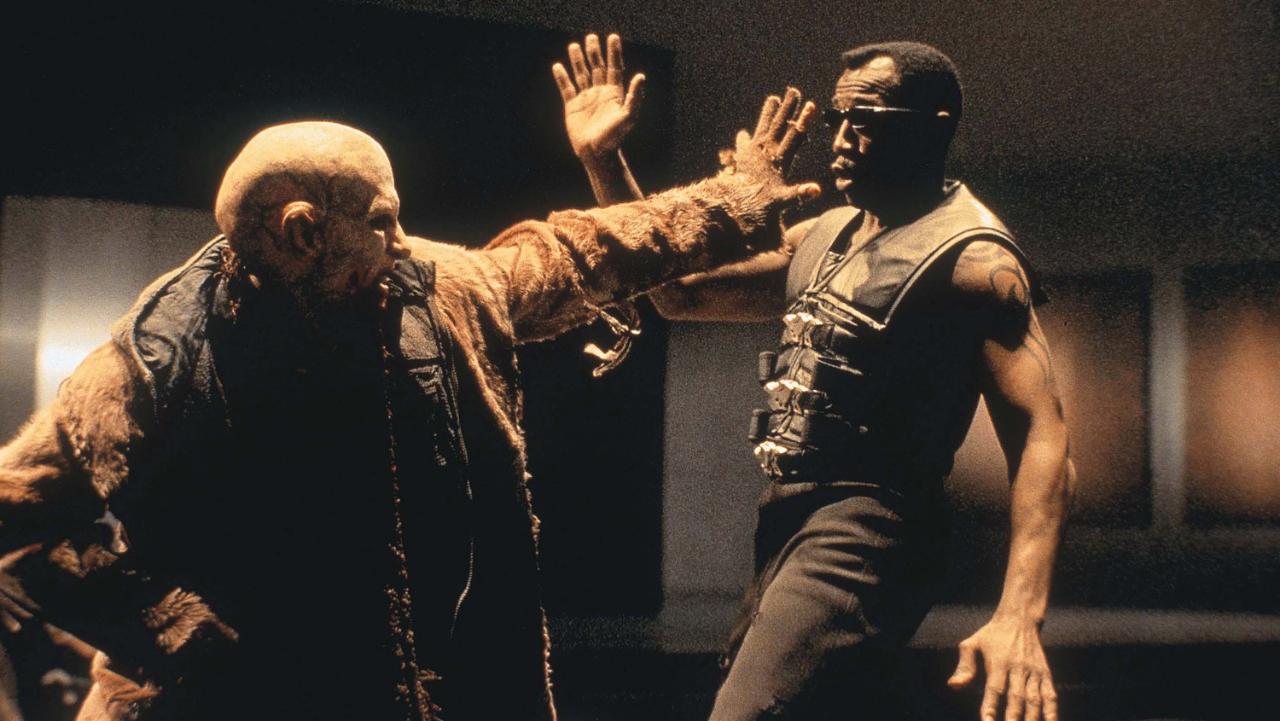
Recommended by Jack Wilhelmi
Blade II is often cited as the best of a rather lackluster movie trilogy. Though it’s the best of the worst, Guillermo Del Toro really put his stamp on a property that needed a little oomph and some extra special TLC.
Del Toro’s vivid imagery and attention to detail is scattered throughout every frame. And while Blade II was rightfully criticized for poor character development and a disjointed plot, the stylized feel and gritty aesthetic that Del Toro was able to create bolstered what was strong about the movie — and made it vastly more enjoyable as a result.
Del Toro’s greatest strength, for many, is his ability to create a mood and a feeling through camera shots, colors, lights, sounds, and other vivid cinematography. While Blade II isn’t the Gothic, hushed, and haunted Crimson Peak or the moody, creature-focused love story of The Shape of Water, Del Toro manages to successfully translate the comic book feel of a larger-than-life character, the Daywalker Blade (Wesley Snipes), onto the big screen.
Vibrant action, bloody violence, and more subdued horror elements punctuate Blade II from start to finish.
Often underrated and overlooked, Blade II deserves a place of honor in Del Toro’s filmography because it paved the way for the storied director to tackle other comic book adaptations and action movies with Hellboy in 2004, Hellboy II: The Golden Army in 2008, and Pacific Rim in 2013.
Del Toro’s fascination with monsters and creatures coincides well with Blade’s antihero status and story, which adds a depth to the character — even if other aspects of the movie are shallow and fall flat.
As with all his movies, Del Toro’s stamp from the director’s chair is felt positively, allowing Blade II to shine as a bright spot in the trilogy. The film also allowed audiences to glimpse del Toro’s unparalleled potential; the seeds of what would later become some of the visionary director’s finest work to date.
4. HELLBOY (2004)
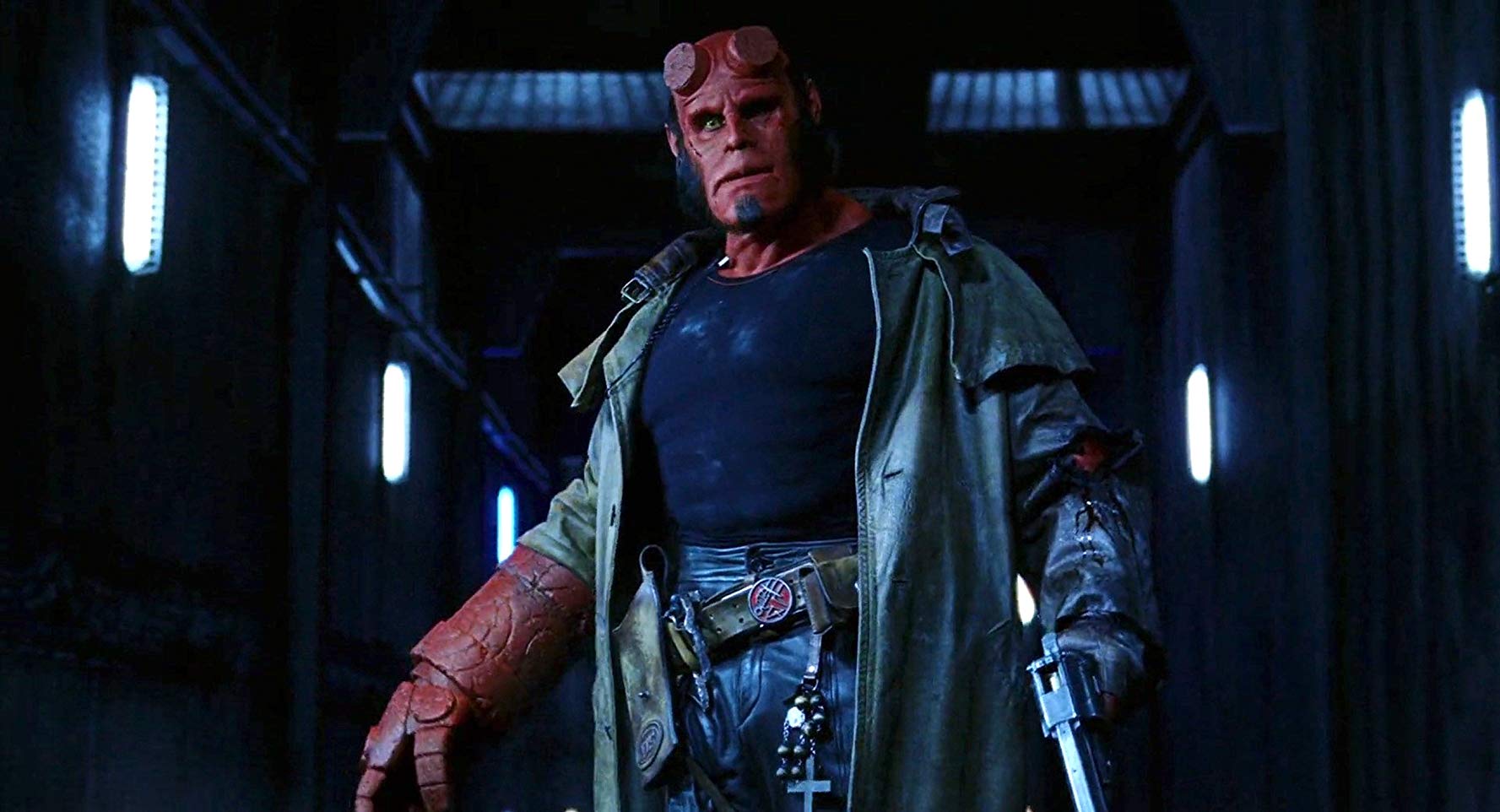
Recommended by Ethan Robles
Hellboy has always felt like an underrated superhero film. It’s not Guillermo Del Toro’s most visual film, nor is it his most artistic. Given the huge success of Pan’s Labyrinth and The Shape of Water, Hellboy begins to feel a bit out of place in Del Toro’s highly stylized and visual world. Even Hellboy 2: The Golden Army (2008) feels more like a Del Toro movie.
But Hellboy is a hugely influential and important film for Del Toro and for comic book adaptation. It’s a master class in taking source material that might be deemed inaccessible or unadaptable and making it intriguing for general audiences.
In general, Mike Mignola’s Hellboy series attracts a niche audience. His red, horned, and stone fisted protagonist has never had the gravitas of Batman or Spiderman. Adapting Mignola’s creation into film is a herculean feat, not only because of the otherworldly protagonists, but also because of its non-mainstream appeal. To put it simply, there is no Guardians of the Galaxy (2014) or Doctor Strange (2016) without Hellboy.
Without Del Toro’s grounded, supernatural film there is no precedent for the truly weird and obscure comic book worlds.
Despite these challenges, Del Toro manages to adapt Hellboy into a film that is grounded, self-aware, and meticulously accurate to its source material.
That vision and careful artistry alone is caused for celebration. But the fact that Hellboy is a damn fun, entertaining, and exciting film is even more of a testament to Del Toro’s ability to capture his audience.
I look back at Hellboy with a different perspective these days. Of course, I will always love Ron Pearlman’s dry wit or Doug Jones’ inspired, physical performance. However, I now appreciate Del Toro’s subtle, intricate care for these characters. If Hellboy (2019) taught us anything, it is how easy it is to mishandle a franchise like Hellboy.
Del Toro, unlike many directors, takes his subject seriously. He understands their deeper emotional appeal and consistently draws from those places when presenting stories to his audience. We often remember him for his style and his unique, beautiful world building. But I think, when his films are logged in history, we will remember Del Toro’s love and care for story.
5. PAN’S LABYRINTH (2006)
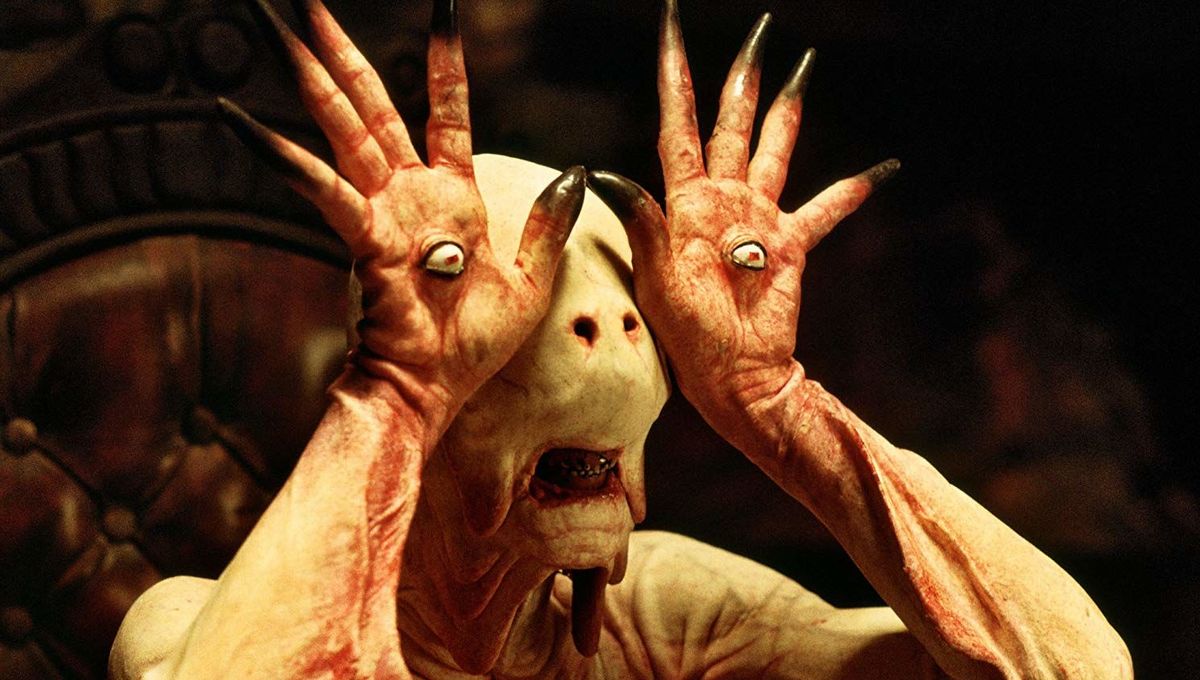
Recommended by Patrick Krause
By the time of the 2006 release of Pan’s Labyrinth, writer/director Guillermo Del Toro already had a string of fan favorites and box office hits under his belt, including Hellboy (2004), The Devil’s Backbone (2001), and Blade II (2002).
Though he continues to make movies that have surpassed the popularity of Pan’s Labyrinth, like the Academy Award winning The Shape of Water (2017) — not to mention co-writing a series of vampire novels titled The Strain and turning them into a hit TV series, and creating a hit Netflix animated series called Trollhunters — it’s his dark fable Pan’s Labyrinth which remains arguably the apex of Del Toro’s storytelling craft.
Set in pro-fascist Spain during 1944, Pan’s Labyrinth is a fairytale in a world of war and oppression. In the middle of oppressive military leadership by Vadal, his new stepdaughter Ofelia rebels against his iron-fist rule over his new family in her own way. She escapes into a dark and magical world of monsters, fauns, and magical creatures with the promise that she is a long-lost princess. To regain her true self, she must pass a series of tests to prove she is the true princess of an underworld realm.
What moved me was Ofelia’s story, and her journey was a rebellion of its own.
Del Toro has stated in interviews that Pan’s Labyrinth is about the choices we make. Vadal and his fascist police remove the possibility of choice, while Ofelia’s journey to discover her true self is all about the choices she makes.
Pan’s Labyrinth tells another story that resonates within me. Vadal represents adulthood — the lack of imagination, the need for, and fear of losing, control. Ofelia represents the childhood innocence so many of us seem to grow out of. She clings to her created world and rejects the restraints of adulthood, represented by a dress she is to wear to a formal dinner hosted by Vadal. Ofelia abandons the dress and embraces a world only she is aware of.
As we grow into adults, the childlike wonder of our world, and the openness to believe in something beyond ourselves, slips away.
Movies like PAN’S LABYRINTH allow us, for a couple of hours, to believe in the unbelievable and wrap ourselves in the warm blanket of our childhood memories where the impossible is possible and we are capable of the extraordinary.
6. HELLBOY II: THE GOLDEN ARMY (2008)
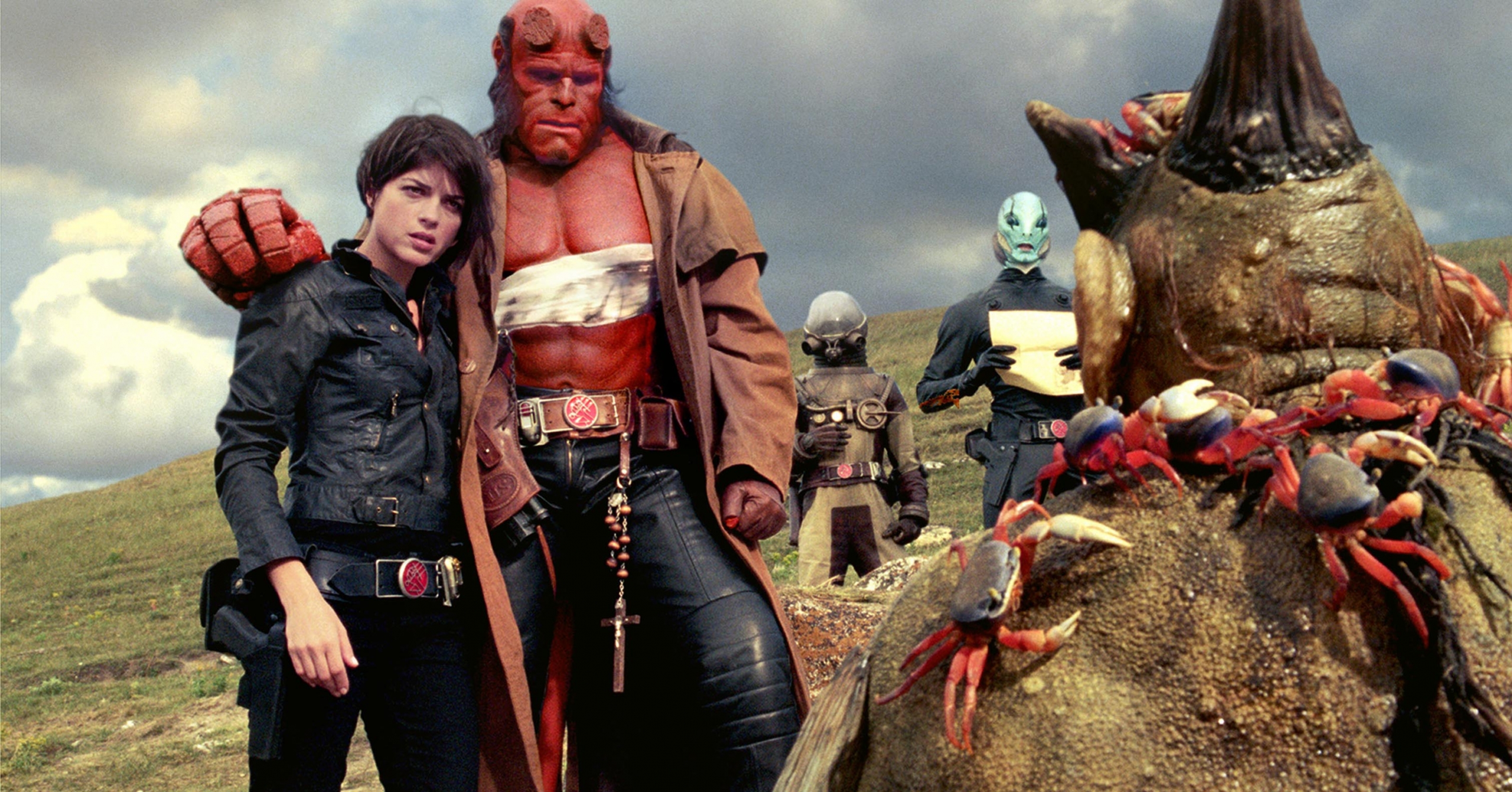
Recommended by The Angry Princess (Stephanie Malone, Editor-in-Chief)
Though critically hailed, Guillermo del Toro’s interpretation of Mike Mignola’s comic series Hellboy was not a huge financial success. However, after proving just what he was capable of with his magnum opus Pan’s Labyrinth, del Toro returned to helm the sequel and was essentially given carte blanche to make exactly the kind of movie he wanted to make.
The result is a wilder, more fantastical, more visually exciting film that boasts some of the most memorable scenes of del Toro’s directorial career. It also adds more heart with an increased focus on the relationship between Hellboy (Ron Perlman) and Liz Sherman (Selma Blair).
The film begins with a young Hellboy (Montse Ribé) asking his adopted father (John Hurt) for a story about the Golden Army, an invincible mechanical army created by a goblin to help the magical kingdom defeat the increasingly violent and power-hungry humans. When King Balor, ruler of the magical creatures, strikes a truce to end the bloodshed, his son, Prince Nuada (Luke Goss), clashes with his father — eventually retreating into exile.
Meanwhile, the Golden Army went “silent, still, and indestructible”, waiting to once again be commanded. When Nuada eventually resurfaces to take back by brute force what is rightfully his, it’s up to Hellboy and the Bureau for Paranormal Research and Defense to save the day. Their quest takes them to the Troll Market. There, they meet and team up with Nuada’s twin sister Nuala (Anna Walton), who develops a strong bond with fan favorite Abe Sapien (the always incredible Doug Jones).
Guest contributor Jarret Reid (@jarret.reid on Instagram) adds: “Troll Market, in my opinion, is the highlight of the film. It is a wondrous secret world filled with unique creatures akin to STAR WARS’ Mos Eisley Cantina or Jabba the Hutt’s Palace. Del Toro was so fascinated with this magical world that he would later revisit a version of it in his TALES OF ARCADIA series.”
In Hellboy II: The Golden Army, del Toro also creates an endlessly entertaining piece of celluloid that works just as well as a standalone film as it does a worthy sequel.
After doing the work of establishing these great characters in Hellboy, the sequel allows del Toro to fully indulge his love of big, wonderfully weird monsters while doing some impressive world building. And, although it’s more action-packed with a deeper story, Hellboy II doesn’t lose a single bit of the charm and humor from the first film.
The Golden Army also gives Perlman more of a chance to shine, and he delivers in spades, chewing up scenery in the part he was born to play. He anchors the film, while a strong supporting cast — including a truly interesting and complex villain — help make movie magic.
Sadly, this film got lost a bit upon initial release, competing with blockbuster superhero hits like The Dark Knight and Iron Man. But revisiting it will remind you how great it really is, and it will make you wish the planned Hellboy III hadn’t been unceremoniously cancelled.
It will also remind you why del Toro is such a master of his craft and why — as evident by the failure of the 2019 R-rated reboot of the film — he was the absolute perfect choice to bring this visionary comic series to life in such an extraordinary and memorable way.
7. DON’T BE AFRAID OF THE DARK (2010)
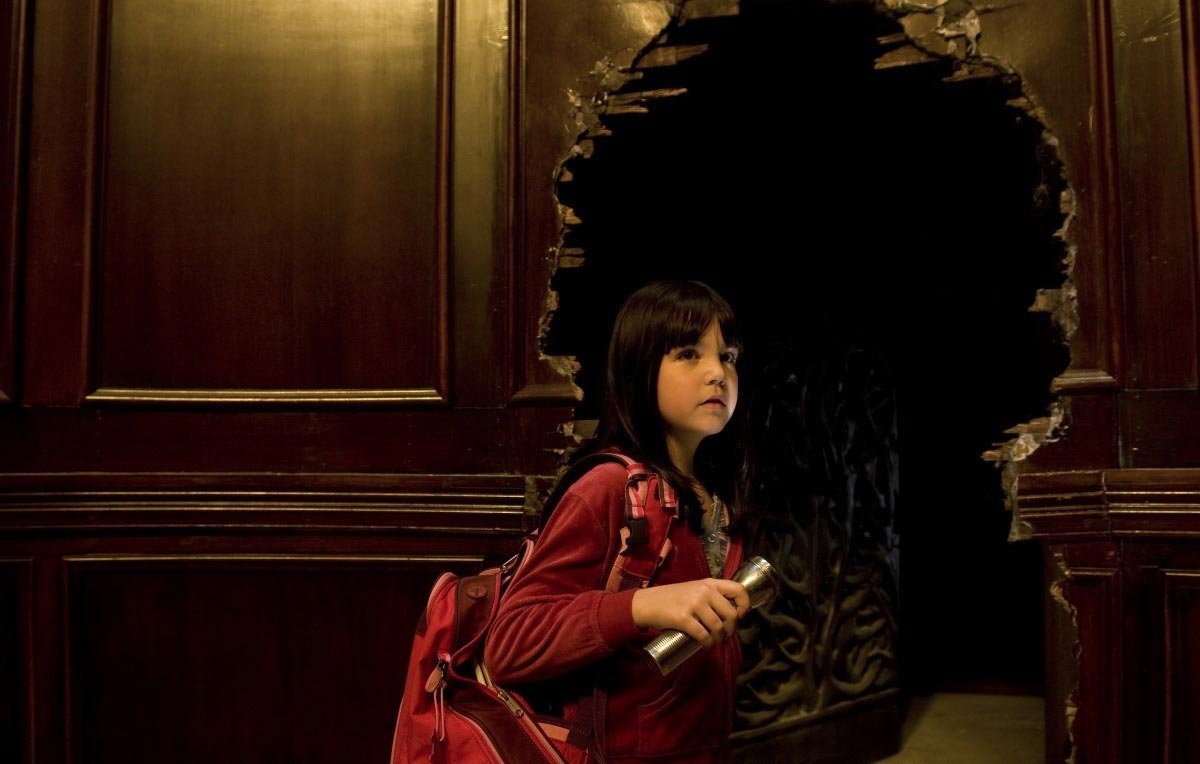
Recommended by Jackie Ruth
I recently watched 2010’s Don’t Be Afraid of the Dark for the first time. All I knew going in was that it was a supernatural horror movie about a little girl, and it was co-written and produced by Guillermo del Toro. I assumed if it were a really good movie, I would’ve heard more about it, but I still wanted to see it for myself.
It turns out, this is not the type of supernatural that involves ghosts; instead it’s more of a creature feature. It starts with 10-year-old Sally (Bailee Madison) traveling to New England to stay with her father Alex (Guy Ritchie) and his new girlfriend/interior designer Kim (Katie Holmes). Alex is fixing up a large, old mansion — think Netflix’s “The Haunting of Hill House” series — to resell it.
This is a property with a lot of history: There are faeries (but not anything like Tinker Bell) residing there. Sally thinks they’re her friends at first, but soon realizes that’s not the case.
One of the best things about Don’t Be Afraid of the Dark is that it’s clear early on there are genuine stakes involved.
This isn’t one of those movies where you know everyone will escape safely, and this creates a strong tension that helps fully immerse you in the narrative.
Sally is the star here. She clearly feels unwanted and neglected, so the film serves as a great metaphor for the depression and anxiety that she feels as a young child of divorce. In that way, it fits into the themes that del Toro so often likes to explore: complicated human emotions as monsters.
The dilapidated mansion becomes a character unto itself, and may have easily influenced the setting of 2015’s Crimson Peak. Sally’s curiosity is also reminiscent of Ofelia’s in 2006’s Pan’s Labyrinth.
Although he didn’t direct the film, del Toro’s involvement in this project still shines through. While not the best film on his impressive resume, it’s definitely one worth exploring for fans of the visionary filmmaker.
8. PACIFIC RIM (2013)

Recommended by Jamie Marino
Guillermo del Toro’s films are big. And covered in magic. Each film has a magical sparkle and sheen to it, whether it be the brassy rusts and acrylic blues of Hellboy II: The Golden Army, the tarry, red velvet cake warmth of Crimson Peak, or the soot of war and cavernous fantasy in Pan’s Labyrinth. But I need to turn my microscope in a different direction.
One of the greatest moviegoing experiences of my life was seeing Pacific Rim in IMAX. It crunched and roared like nothing else I had ever seen, or have seen since. Pacific Rim is unashamed, beastly, and bombastic mecha worship. Mecha and giant monsters, although in this film they are referred to as Jaegers and Kaiju. That’s fine by me, because this movie is the legendary Neon Genesis Evangelion come to visual life. It has been simplified tremendously, and the subtext erased, but for big beautiful monster battles, Pacific Rim is where I go. Certainly not to those soulless and needlessly misogynistic Transformers movies.
The world building is brief, since one thing Pacific Rim will never be accused of being is complicated.
Pacific Rim gets energy from a place none of del Toro’s other films do. It comes from a whimsical, elementary school, “look what I can do” mentality. He owns our hearts and souls by making heartbreaking, dark fantasy. But in Pacific Rim, we get pop culture winks, a whole buffet of robo-monster cool, and gadget science made to look fucking awesome (not logical or functional).
And those Yeager names! Gypsy Danger. Striker Eureka. Chrome Brutus. Matador Fury. And let’s not forget their base of operations, The Shatterdome. When the Yeagers are dropped from helicopters into the ocean and whole schools of fish are thrown into the air.
When I watch Pacific Rim, I’m 12 again.
Sitting too close to the tv screen, eating SpaghettiOs with Meatballs, and trying to stand up my Transformers on the living room carpet.
That’s not to say it is devoid of emotional resonance. The flashback scene when Stacker Pentecost saves little Mako from the crab kaiju brings a tear to my eye every time. She looks as high up as she possibly could to see Pentecost crawl out of his Yeager. They look upon each other like father and daughter, and moments like that are what make me love movies so much.
It throws the occasional innovation into the mix. There is the standard cookie cutter romance between two characters who start out the movie fighting. But after they save the day and it’s time for “their moment”, they don’t kiss. They just lean forward in exhaustion and rest on each other’s foreheads. That gesture can sometimes show more mutual affection than any kiss.
Watch Pacific Rim when you want to watch a loud (not crude) movie and crack your house in half. It has a rambunctious purity to it, and it’s a 2 hour+ “holy shit” chant. It’s a great film to watch with the kids and totally freak-out with them. Pacific Rim is a celebration of the youthful imagination that lies at the heart of “big dumb blockbusters”.
9. P.T. VIDEO GAME (2014)
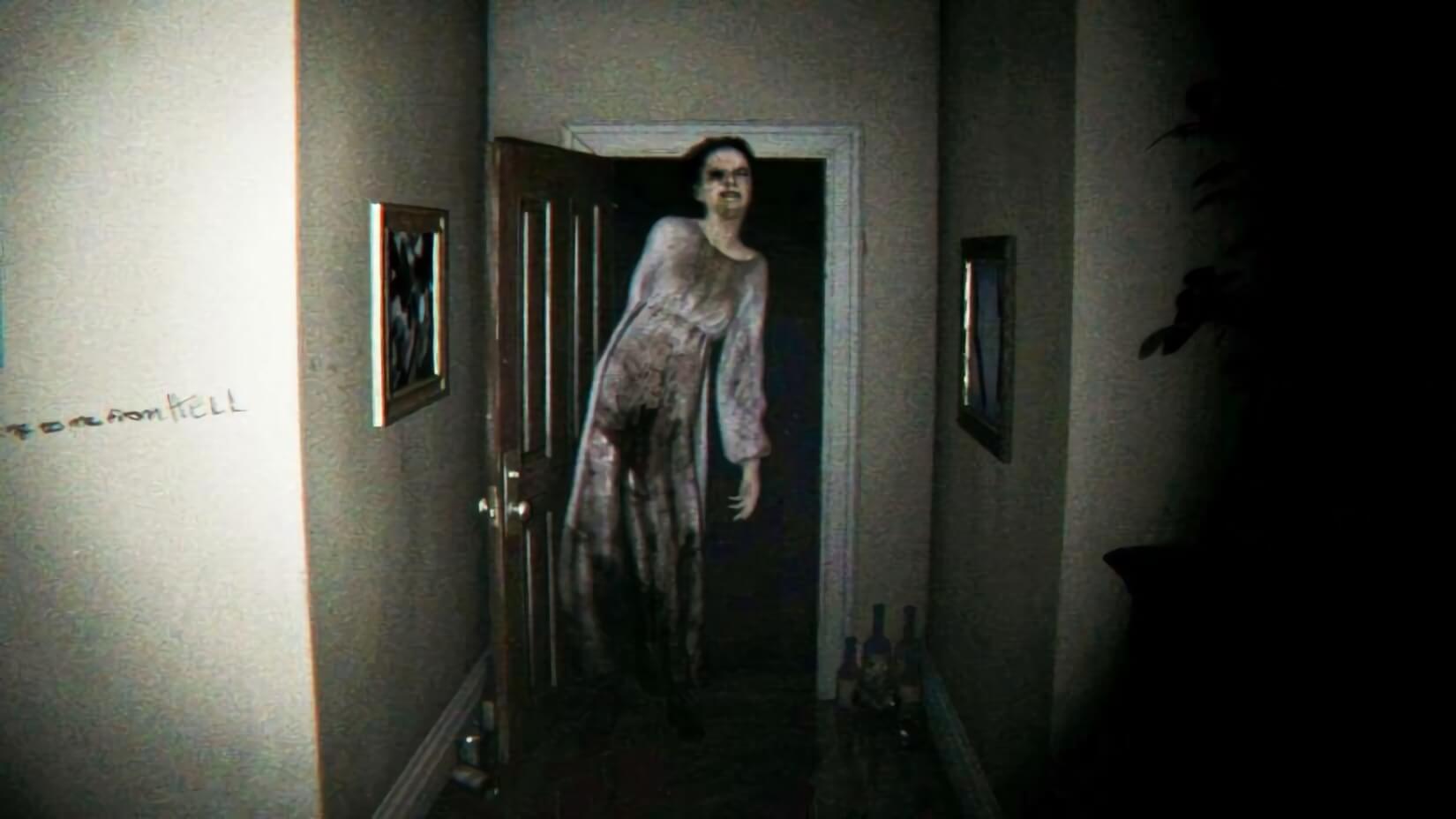
Recommended by Megan Hopkin
Although particularly noted for his cinematic prestige, let’s not forget that Guillermo del Toro helped birth a screaming, disgusting, spooky baby right into the laps of PS4 owners. Yes, the director was involved in the now notorious video game, P.T — but in secret. The game was directed and designed by Hideo Kojima, in collaboration with del Toro. Although Kojima Productions made the finished product, they worked under the pseudonym ‘7780s Studio’. Sneaky.
Before controllers get walloped at me from gamers, I’ll correct myself. P.T wasn’t a game, as such. It was actually a playable trailer for a since cancelled installment of Silent Hill – hence the abbreviation. Yet, gamers that downloaded the free trailer from the PlayStation Store weren’t to know that. P.T was shrouded in mystery. The opening title consisted of a forest backdrop. In my naivety, I believed it could be a pleasant walking simulator. This screen was ultimately a red herring, however, as a simple start up of the game revealed.
In the interest of transparency, my brother started the game. I instantly wimped out.
The video game consists of a repeating corridor, a not-so-friendly ghost (sorry Casper), and bad parenting. No forests, no big foots. As your silent protagonist makes his way through the claustrophobic environment, little pieces of the story get pieced together by the oration from a crackly radio. The gist is that a regular family man murdered his family in a spectacularly gruesome fashion, before killing himself. And that there’s something in the tap water. And that we shouldn’t touch that dial because… “we’re only getting started!”
Cue potentially the scariest — or, at the very least, my personal favorite — horror antagonist in a video game.
Lisa is the house ghost who stalks your every move. She looks grotesque. This is because Mz. Lisa’s body is constantly twitching, her face is hideously deformed, and she loves nothing more than a good jump scare. After doing some digging, I discovered that Lisa actually follows you everywhere. At all times. Hacking into the game with boffin-ry that I cannot comprehend, you can clearly see Lisa’s lumbering limbs traipse behind your player even when you think you’re alone. Lisa’s ‘events’ varied from player to player, making each and every play through of P.T completely unpredictable.
In completing the playable teaser — no simple feat — players were granted access in knowing just what the game was a trailer for, and who had been behind our nightmarish ordeal. P.T served as the biggest real life plot twist of the year, revealing that you had ACTUALLY been Norman Reedus all along (who knew???), before dropping the bombshell some time later that Silent Hills would never see the light of day.
Consequentially, the cancellation of the project meant that P.T was removed from the PlayStation Store, too. Yet its legacy relentlessly lives on.
Del Torro and Kojima’s long standing reputation in their industries merged together to create something incredibly special for horror fans — and it was an EXPERIENCE.
Anyone who has played P.T will remember their first loop through the corridor. Their first ghost attack. The first time they realized they could talk to the weird paper bag in the corner of the respawn room. Del Toro brought his stylish flair and air for oppressive yet fantastical storytelling, encouraging brave souls to step away from the role of art voyeur and into that of terrified protagonist. That, to me, is beautiful.
10. THE STRAIN TV SERIES (2014-2017)
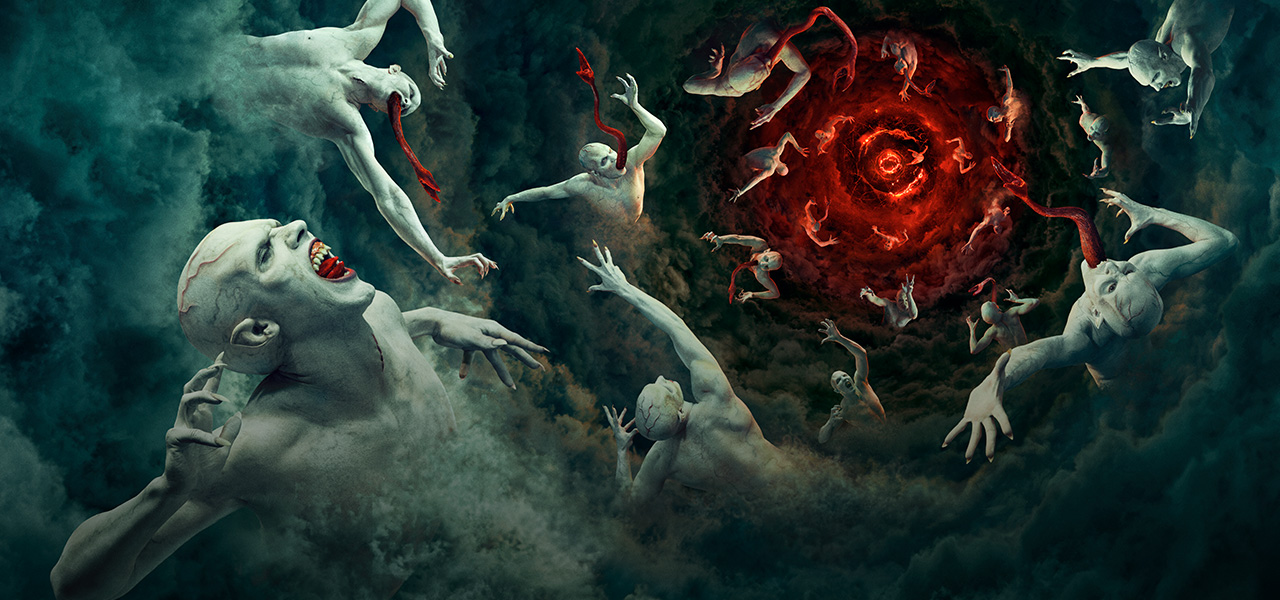
Recommended by Guest Contributor Craig Draheim
FX’s response to The Walking Dead came in the form of a vampire-pandemic series that could only be conceived with the help of co-creator, Guillermo del Toro, because it oddly combines all the elements from his early successes such as, Cronos, Mimic, Blade II, and of course the use of bugs and authoritarian villains, which is a common thread throughout all his work.
Based on the book series The Strain Trilogy, written by del Toro and Chuck Hogan, the television series follows a group of people in New York City trying to stop a parasite-spread pandemic that turns the infected into hivemind, vampiric-like creatures that are linked to the “Master.” These vampires greatly resemble the reapers from Blade II in design, with their own lore that tries to provide a more scientific-based reasoning for a vampire.
The ragtag team is made up of members of the CDC’s rapid response team, a holocaust survivor who knows all about the Master, a Ukrainian exterminator, Mexican gang member, a hacker, and others. On top of being initially a book series and television show, it’s also been adapted into comic form, with each adaptation remaining fairly consistent because of del Toro and Hogan’s involvement. While I began my Strain journey with the comics, my knowledge is primarily through the television series, for the personal reason that I consider del Toro to be more of a visual storyteller, allowing the comic and film mediums to better convey his vision.
This is one of those offbeat projects that you’d more likely find on the Syfy channel than a network trying to appeal to a wider audience.
It doesn’t have the “sex appeal” associated with a vampire series. Instead, it starts off attempting to be more dramatic and “scientific” (cinema science, not real science), then morphs into a melodramatic creature feature. This shift may appear corny to many, and it’s understandable why it didn’t take off like The Walking Dead.
You get the sense that the television series would have worked better as three or four films, but it still works as a binge-worthy joyride thanks to del Toro’s knack for creating B-movie fun on a high-scale, blockbuster approach. And the cherry on top is that it doesn’t require filler, spinoffs, or companion pieces (though there is the limited series comic, Mister Quinlan). It’s simply a complete story told in three books, four seasons, or six volumes, depending on which medium you choose.
Is it del Toro’s most personal work? No, that’s Devil’s Backbone. His best? Arguably, that would be Pan’s Labyrinth. Most entertaining? That honor probably goes to Blade II. However, The Strain represents del Toro at his most bombastically fun, utilizing all his quirks and interests into one epic tale of vampires, parasites, Nazis, heroes from all walks of life, love, and the bond between father and son.
11. CRIMSON PEAK (2015)
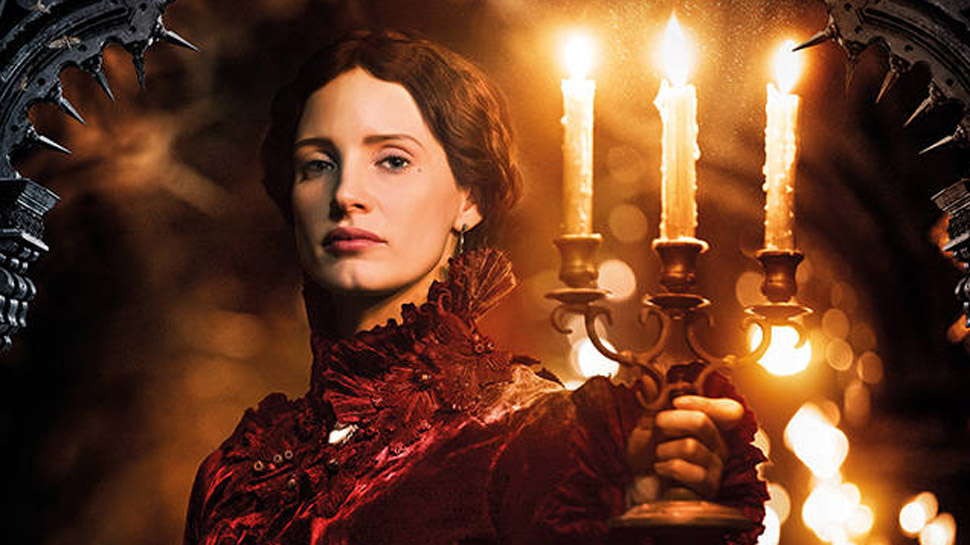
Recommended by Jamie Alvey
Crimson Peak is Guillermo del Toro’s love letter to gothic romantic horror that has sadly fallen out of fashion.
It would be easy for one to believe that Crimson Peak is an adaptation of a lost Bronte or Shelley novel, but it is del Toro’s own frighteningly beautiful concoction. It’s heartbreaking to think that a film that is so exquisite and rich was met with such a disappointing and middling reception. But over the past five years, the love for Crimson Peak is rightfully growing and continues to be strong.
The film follows young aspiring writer Edith Cushing (Mia Wasikowska) as she falls in love with an English baronet, Thomas Sharpe (Tom Hiddleston), a man with a dark past. She finds herself whisked away to his decaying family estate after the mysterious death of her father. Edith has trouble adapting to the harsh landscape of the massive house as well as being under the near constant surveillance of Thomas’s cold and jealous sister Lucille (Jessica Chastain).
What transpires is a lush masterpiece for the senses, with an intelligent plot that is superbly acted.
Chastain is at her best as Lucille Sharpe — no doubt a stand out in a film that boasts skillful performances from everyone involved. Del Toro crafts each and every character with care, but it’s his attention to Lucille that catches the eye and causes the viewer to take pause.
A character like Lucille could easily be reduced to a cartoonish villainess, but del Toro makes her a raw and real character that the audience can empathize with, whether they want to or not. It takes a great writer to create a villain you can feel for despite their often ghoulish and shocking actions. Lucille was a victim who became an aggressor and abuser herself, giving into a cycle of violence that was set into motion by her own parents.
The viewer is given space to feel for Lucille and appreciate the amazing character work, but del Toro never questions if there is redemption for someone like her. It’s all far too late by the time the heartrending final scene plays out. Many writers would pull a lazy last effort to save Lucille, but del Toro allows her to exist on her own terms — and die on them.
CRIMSON PEAK often gets left out of the del Toro conversation and is overshadowed by his other films, but it stands as a monument to his care as a writer and lover of horror.
He takes care to steer his chills in a direction that many modern filmmakers don’t, with work that harkens back to a literary horror tradition that many love but seldom get the chance to fully discuss. The gothic and the romantic are in full display when it comes to Crimson Peak. Del Toro bids us all welcome to the decadence of it all, and it’s impossible not to fall firmly in love.
12. THE SHAPE OF WATER (2017)

Recommended by Kourtnea Hogan
Ever since I was a little girl, I have been fascinated by the ocean and all the weird creatures it holds. When we had to take career tests in elementary school, I always ended up getting put in with the sciences. “I want to be a marine biologist,” I would proudly tell my teachers, classmates, and guidance counselors.
It wouldn’t be until years later that I would get into horror movies. But even when I was afraid of my own shadow, I was in love with The Creature from the Black Lagoon. I didn’t even care to watch the movie, I just liked looking at the creature. A big fish monster, a dream come true! I was fascinated with watching him swim, and as an adult I would devour The Lady from the Black Lagoon: Hollywood Monsters and the Lost Legacy of Milicent Patrick.
While I ended up not going into the sciences (and I still kick myself over it today), my fascination with the ocean and its creatures never left. I would become fascinated with Hellboy’s Abe Sapien, digging through the Hellboy comics and even going through all of BPRD. While vampires, werewolves, and zombies all had their time in the sun again every few years, my beautiful fish creatures seemed to be left behind — that is, until Guillermo Del Toro brought back movie magic with The Shape of Water.
When it was first released, I had just moved to an entirely different state. I was virtually alone, and broke. I scrounged up money I didn’t have because I had to see this film in the theater. I had to experience it on the big screen. I was already in love with Del Toro’s work — and had been since Pan’s Labyrinth — and I couldn’t believe my luck that he, too, was obsessed with The Creature.
I saw the movie in a nearly empty theatre and cried my way through a lot of it.
I was in love with everything about the film: the design, the music, the story, and the acting — all flawless. The style was unmistakably del Toro, and it was the best mixture of horror and fairytale I had seen since Pan’s Labyrinth.
I also think 2018 might have been the first year I ever really watched the Oscars, after I saw how many awards The Shape of Water was nominated for (thirteen in total). I so wanted this beautiful, remarkable film to win in every category. However, I wasn’t expecting much, given the Academy’s track record with honoring genre films. I held out hope it would at least win in a couple of technical categories, like Best Production Design. To my surprise and utter delight, it did in fact win that category — as well as in three other categories, including Best Original Score, Best Director, and the holy grail, Best Picture.
The film’s surprising success at the 2018 Academy Awards helped support growing sea change in the perception of horror films, proving that the genre is just as capable of producing cinematically flawless films with compelling storylines and stellar performances. Of course, we know a percentage of genre films are of the stereotypical hack and slash variety. But many films can easily go toe-to-toe with the most respected dramas, and it was glorious to see the Academy (for once) recognize this fact — even if it was more of an anomaly than the start of a consistent trend.
While there is some debate as to whether The Shape of Water should truly be classified as horror, most genre fans readily claim it as one of our own and find it quite easy to defend as such. The film also does an extraordinary job showing us that “the other” might not be as scary as we once imagined, while simultaneously opening our eyes to the cultural horrors around us.
THE SHAPE OF WATER means so much to me because it carved a place for horror to be talked about as actual art, without taking away any of the genre’s edge. The creature, and his story, will always hold a special place in my heart.
13. THE SHAPE OF WATER NOVELIZATION (2018)
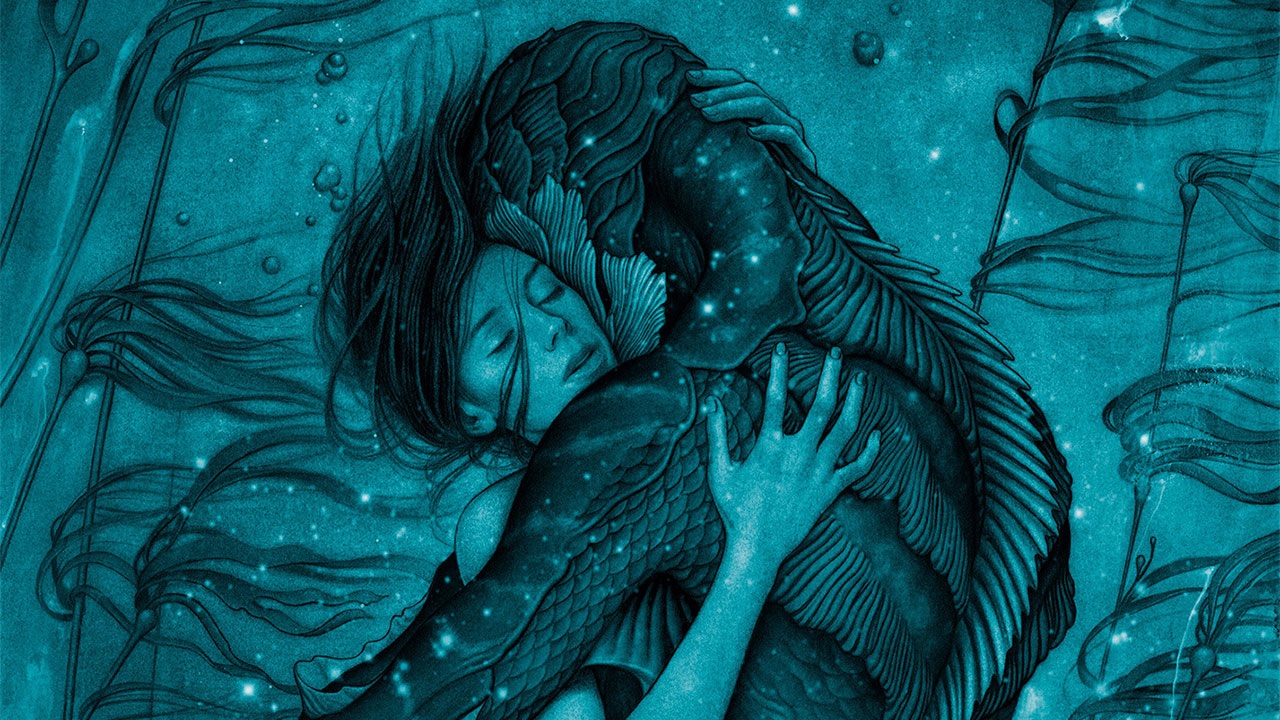
Recommended by Lex Vranick
In late 2017, viewers waded into the murky-but-mystical depths of The Shape of Water. Just a few months later, the same story washed up on shelves, sweeping fans further into this fantastical underwater romance. This book/movie duo was uniquely developed by Guillermo del Toro and Daniel Kraus: one story, two artists, two mediums.
The story itself was inspired by del Toro’s early fascination with The Creature From the Black Lagoon. Set in 1962, against a Cold War backdrop cloaked in secrets, the story explores the unconventional romance between orphan Elisa Esposito and a creature known only as The Amphibian Man. The film was an instant hit in theaters, charming moviegoers and critics all the way to the 90th Academy Awards, where it won Best Picture (as well as Best Director, Best Production Design, and Best Original Score; it was kind of a big deal).
On first glance, The Shape of Water lends itself easily to film, and it might be hard to picture such a visually impactful piece in black ink. Just three years post-release and the image of Elisa and The Amphibian Man holding one another underwater is already one of the most iconic in Hollywood. It is true that the book has to work overtime to paint these pictures with words; but the real magic of the book — at least for me — is the insight it gives into the characters we first met on screen.
Del Toro is a master of characterization.
From Hellboy to the Pale Man, Edith Cushing to Mako Mori, he breathes life into characters that tug at our heartstrings, frighten us, that make us root for them, that make us feel something visceral. The film does this well enough, but when del Toro invites Kraus into his sandbox and lets him play, magic happens.
The book grants insight into even the most minor of background characters. It puts you inside these people’s heads, making villains all the more sinister and heroes more complex. Kraus and del Toro work together to add layers on top of layers to each character in this micro-universe, and in doing so build out the story’s world around them — and, more importantly, around the reader. It makes you feel like a part of the action; like you are sneaking around a government laboratory with Elisa, walking with her to her apartment, listening to the sounds of the cinema below it.
Speaking of action, the book has a lot. The film sits at just over two hours in length; the book tacks on additional scenes, bits and pieces that feel a lot like sifting through the cutting room floor, but these additions push the story along and give readers an even deeper understanding of the world del Toro has dreamed up.
The collaboration between del Toro and Kraus was ambitious, to say the least. But the beautiful thing about The Shape of Water is that, while each iteration of the story stands perfectly well on its own, together they create a world so utterly awe-inspiring that you never want to leave.


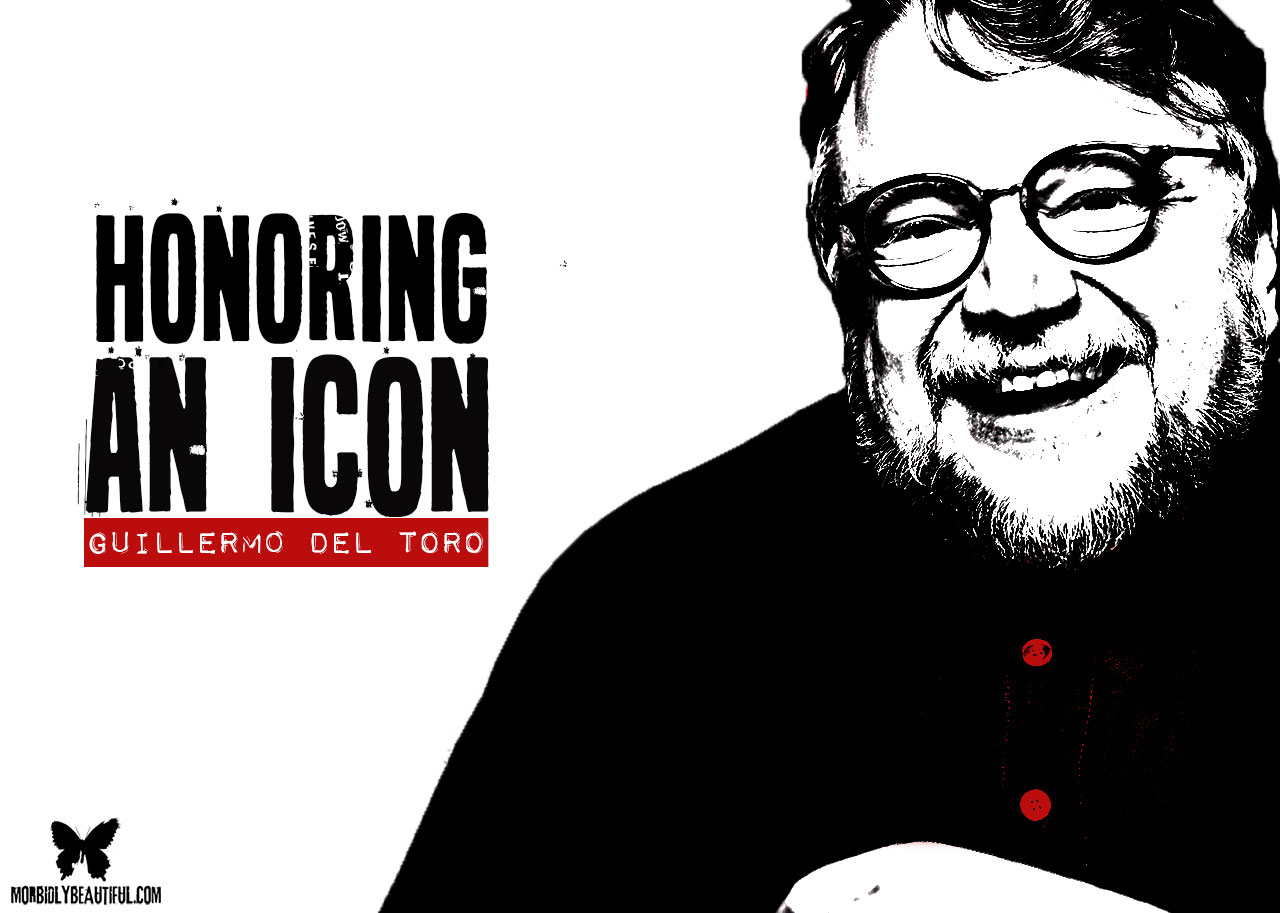
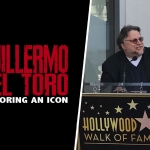
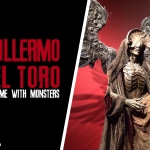
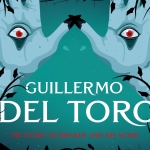









Follow Us!